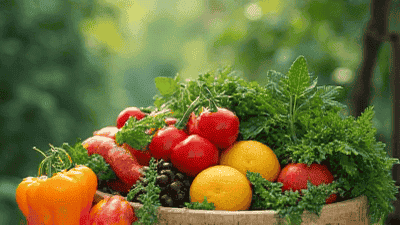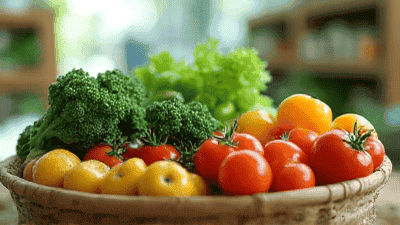
As we step into 2025, the conversation around sustainable eating has gathered immense momentum. The growing awareness of climate change, environmental degradation, and health issues related to poor dietary habits has driven individuals, organizations, and governments to rethink how we produce, consume, and waste food. Sustainable eating transcends mere diet; it’s about making choices that are good for our health, the planet, and the economy.
Sustainable eating refers to a diet that meets nutritional needs while minimizing environmental impact. It prioritizes food that is produced through farming practices that conserve natural resources, support local economies, and promote biodiversity. Sustainable eating encompasses a wide array of practices, from choosing locally sourced produce to reducing meat consumption and minimizing food waste.
Environmental Impact: Food production accounts for a significant portion of global greenhouse gas emissions. Sustainable eating aims to reduce this impact through conscious food choices.
Health Benefits: Diets that are rich in whole, plant-based foods have been linked to better health outcomes, including reduced risks for chronic diseases such as obesity, diabetes, and heart disease.
Economic Sustainability: Supporting local farmers and businesses strengthens community economies and promotes fair trade practices.

As we look toward 2025, several key trends are shaping the landscape of sustainable eating. These trends are influenced by consumer preferences, technological advancements, and a growing emphasis on health and wellness.
Overview: Plant-based diets are gaining traction as individuals seek to reduce their environmental impact. By consuming more fruits, vegetables, legumes, grains, nuts, and seeds, people limit their reliance on animal products, which often have a larger carbon footprint.
Flexitarianism: Flexitarian diets, which emphasize a primarily plant-based diet with occasional meat and dairy, are emerging as a popular choice for those seeking to reduce meat consumption without fully committing to vegetarianism or veganism.
Why it Matters: The production of plant-based foods generally requires fewer resources and generates fewer greenhouse gases compared to animal agriculture. As awareness grows, more people are choosing flexible eating patterns that support their health while benefiting the environment.
Overview: Regenerative agriculture goes beyond sustainable practices, focusing on rebuilding soil health, enhancing biodiversity, and restoring ecosystems. This method emphasizes crop rotation, cover cropping, and holistic livestock management to create a closed-loop system that enhances productivity and restores the land.
The Role of Consumers: Educated consumers are increasingly seeking products from farms that practice regenerative agriculture, recognizing the direct link between their purchases and the health of the planet.
Why it Matters: By supporting regenerative agriculture, consumers contribute to resilient food systems that can adapt to climate change and contribute to carbon sequestration, thereby playing an active role in climate action.
Overview: The farm-to-table movement emphasizes the importance of sourcing food directly from local farms. This trend champions relationships between consumers and local producers, fostering transparency in food sourcing.
Key Components: Many restaurants and cafés now highlight local sourcing on their menus, creating a unique dining experience while supporting the local economy. In 2025, consumers are expected to seek more dining experiences that prioritize local ingredients.
Why it Matters: By choosing local foods, consumers reduce the carbon footprint associated with transportation, support their local economies, and encourage seasonal eating, which is often fresher and more flavorful.
Overview: With an estimated one-third of food produced for human consumption wasted globally, food waste reduction is becoming a significant point of focus. Efforts to minimize waste include better food storage techniques, creative uses for leftovers, and the rise of upcycling food by-products.
Consumer Awareness: In 2025, consumers are becoming more educated about the implications of food waste and are actively seeking ways to minimize it in their households. Social media platforms and apps dedicated to food waste reduction are on the rise, helping people share tips and solutions.
Why it Matters: Reducing food waste not only conserves resources but also addresses food insecurity, as wasted food could otherwise nourish those in need.
Overview: Technology is playing an increasingly important role in promoting sustainable eating. From apps that help track food waste to online platforms connecting consumers with local farmers, technology is facilitating more sustainable choices.
Noteworthy Innovations:
Why it Matters: By leveraging technology, consumers can make informed choices about their food purchases, contributing to a more sustainable food system.
Overview: As the importance of diet in overall health becomes more evident, nutrition awareness and food literacy are emerging trends. Consumers are increasingly educated about the nutritional value of their food choices, emphasizing the concept of "food as medicine."
Culinary Education: Cooking classes, online resources, and community workshops are becoming popular, empowering individuals to develop their culinary skills and understand the nutritional benefits of different ingredients.
Why it Matters: Improved food literacy fosters a more direct relationship with food, encouraging informed choices that benefit personal health and the environment.
Overview: As fish populations decline and overfishing becomes a critical issue, consumers are becoming more discerning about their seafood choices. Sustainable seafood sourcing, which focuses on fish caught or farmed using methods that maintain fish stocks and protect the ecosystem, is gaining popularity.
Guidelines: Organizations such as the Marine Stewardship Council provide certifications that help consumers choose sustainably sourced seafood. Restaurant menus are also increasingly featuring responsibly sourced fish and seafood.
Why it Matters: By opting for sustainable seafood, consumers contribute to the protection of aquatic ecosystems and marine biodiversity.
To embrace sustainable eating, start by educating yourself about the food system and its impacts. Attend workshops, read books, and follow credible sources online that focus on food sustainability, nutrition, and health.
Incorporate a variety of fruits, vegetables, legumes, grains, nuts, and seeds into your diet. Aim for at least half your plate to consist of plant-based foods, and gradually reduce your intake of animal products.
Whenever possible, shop at farmers' markets or local grocery stores that prioritize local sourcing. Explore community-supported agriculture (CSA) options to receive regular deliveries of fresh produce from local farms.
Implement strategies to minimize food waste in your kitchen:
Educate yourself about sustainable seafood practices and seek out fish that are certified by recognized organizations. Popular choices include Alaskan salmon, sardines, and farmed shellfish when sourced responsibly.
If you have the space, consider starting a small garden where you can grow your own fruits and vegetables. You can also adopt sustainable gardening techniques, such as composting and crop rotation.
Explore apps and resources that help track food waste, provide recipes for leftovers, and connect you with local farms. Being informed about nutrition and sustainability allows for better decision-making.

Following the trends of sustainable eating, here are simple yet delicious recipes that highlight these principles:
As we navigate the emerging trends in sustainable eating, it is vital to recognize that our food choices have the power to shape a healthier planet, foster food security, and promote better health for individuals and communities.
By understanding and embracing trends such as plant-based diets, regenerative agriculture, the farm-to-table movement, and technology, individuals can take actionable steps toward sustainable eating. Each small change in our dietary habits contributes to the larger goal of creating a resilient food system.